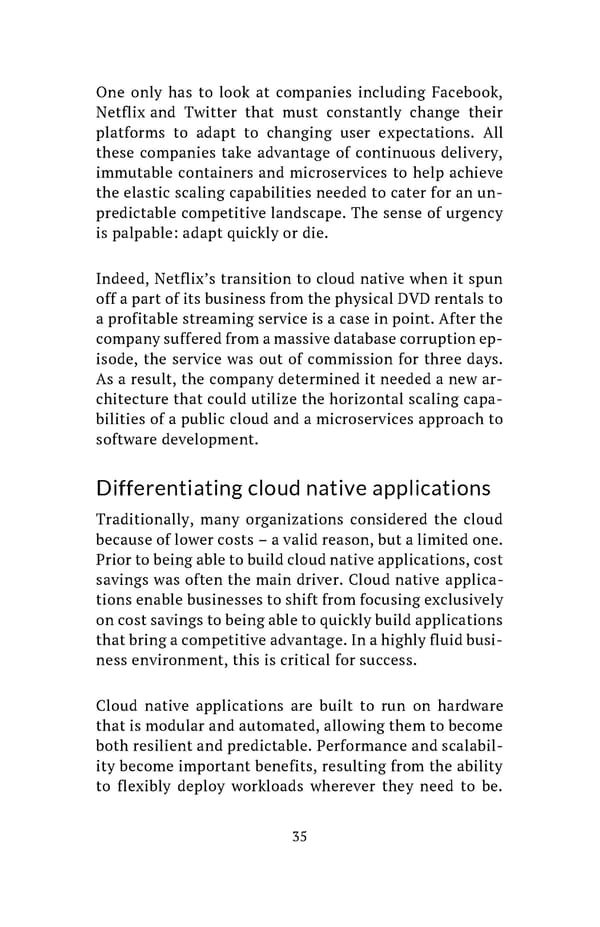One only has to look at companies including Facebook, Netflix and Twitter that must constantly change their platforms to adapt to changing user expectations. All these companies take advantage of continuous delivery, immutable containers and microservices to help achieve the elastic scaling capabilities needed to cater for an un- predictable competitive landscape. The sense of urgency is palpable: adapt quickly or die. Indeed, Netflix’s transition to cloud native when it spun off a part of its business from the physical DVD rentals to a profitable streaming service is a case in point. After the company suffered from a massive database corruption ep- isode, the service was out of commission for three days. As a result, the company determined it needed a new ar- chitecture that could utilize the horizontal scaling capa- bilities of a public cloud and a microservices approach to software development. Differentiating cloud native applications Traditionally, many organizations considered the cloud because of lower costs – a valid reason, but a limited one. Prior to being able to build cloud native applications, cost savings was often the main driver. Cloud native applica- tions enable businesses to shift from focusing exclusively on cost savings to being able to quickly build applications that bring a competitive advantage. In a highly fluid busi- ness environment, this is critical for success. Cloud native applications are built to run on hardware that is modular and automated, allowing them to become both resilient and predictable. Performance and scalabil- ity become important benefits, resulting from the ability to flexibly deploy workloads wherever they need to be. 35
 Building Cloud Native Apps Painlessly Page 39 Page 41
Building Cloud Native Apps Painlessly Page 39 Page 41